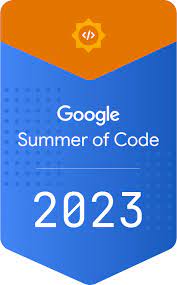Student's Story - Aurora Rossi (PhD candidate)
Interview
Aurora Rossi has embarked on a fully funded doctorate in 2022 with a grant from DS4H Graduate school. She is challenging her expertise in the Julia programming language through a participation in the Google Summer of Code program and JuliaCon 2023 at the Massachusetts Institute of Technology.
2023, June 12

Aurora Rossi
PhD candidate in Inria-I3S COATI team
What led you to do a doctorate at Université Côte d'Azur?
I completed both my bachelor's and master's degrees in Applied Mathematics at the University of Verona in Italy. My professors then suggested me to apply for an internship at Inria - Université Côte d'Azur through the Erasmus+ program. I found it was an interesting experience to get involved in research for the first time and an opportunity to invest in my academic education, continuing with a PhD.
What is your area of research?
My thesis is about the application of graph theory, in particular of temporal graphs (i.e. graphs that change over time), to other sciences such as neuroscience. My team is the COATI team, a joint team between Inria Research Center at Université Côte d'Azur and the I3S lab. I also collaborate with the Inria CRONOS team.

You recently took part in one of the most challenging open source projects, Google Summer of Code. Tell us about it.
Google Summer of Code (GSoC) is an international online program designed to introduce new contributors to open source software development under the guidance of experienced mentors. It is a highly competitive program, and a great way to gain experience and demonstrate your skills on a specific topic.
My project is with the Julia programming language organization. I am contributing to a Julia package of graph neural networks; in particular, I am extending the package to support temporal graph neural networks. To have a good chance of being accepted into the program, I started working on my application many months before the deadline by contributing to the software library and discussing the topic with the mentor in order to submit a solid proposal.
There were 43,765 applicants from 160 countries. In early May, I received the good news that I was one of the 967 students selected this year! This means that I will have the opportunity to participate this summer in a 12-week coding project under the guidance of an expert mentor.
Has taking part in this program opened new doors for you?
Yes! At the end of July I will be attending JuliaCon at the Massachusetts Institute of Technology (MIT), Cambridge, USA. JuliaCon is the official conference of the Julia language, and I will be giving a talk about my Google Summer of Code project and another talk about my code contributions to the JuliaGraph organization. It will be a nice opportunity to meet all the people I have been in contact with and other Julia enthusiasts. It will allow me to share my projects, receive constructive feedback, and possibly discover new opportunities for collaboration and growth in the Julia community.What is Julia programming used for?
Scientists can use Julia to quickly and easily develop data analysis and visualization tools, numerical solutions, and scientific computing applications. Julia's numerical computing capabilities enable scientists to solve complex mathematical problems easily.
I'm really happy about DS4H Graduate school support, especially the extra funding I received for my PhD project, which supports important experiences for my research career like the one I'll have at MIT.
Find out more
- Aurora's thesis in progress (2022-2025): Algorithmic aspects and random network models for temporal brain networks, supervised by David Coudert
- Personal webpage: https://aurorarossi.github.io/
- Google Summer of Code program: https://summerofcode.withgoogle.com/
- Aurora's GSoC project: Extending GraphNeuralNetworks.jl to support Temporal Graphs
- Julia Conference 2023: https://juliacon.org/2023/
- Inria COATI research team
- DS4H Graduate school PhD programs and fundings
